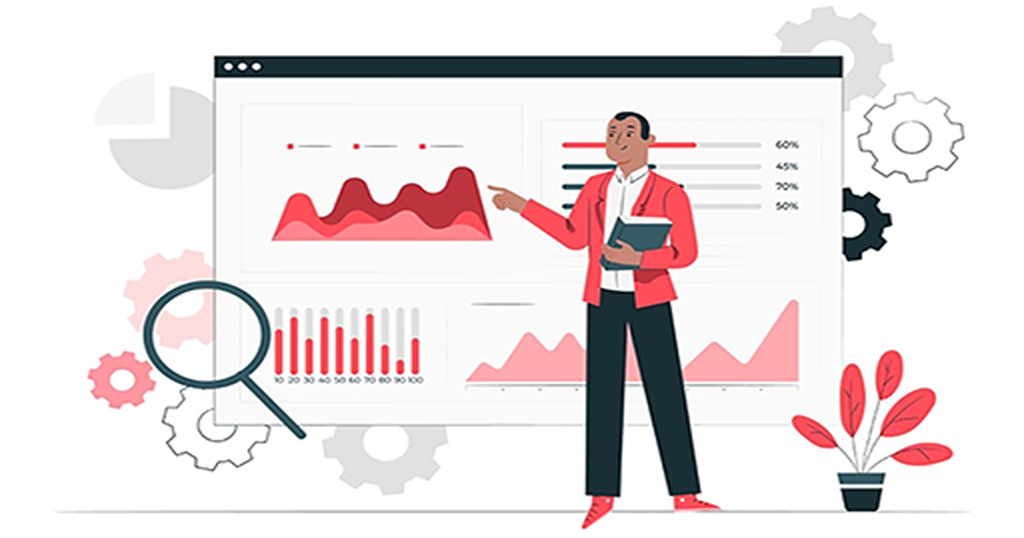Talent Intelligence: How It’s Defining the 2021 Recruitment Landscape
By now you would have read scores of articles on how CoVID-19 changed 2020 hiring and how it brought a wave of virtual recruitment strategies into the recruitment landscape. Since the pandemic is far from over, most of you must have even adopted this new style of recruitment by now.
But do you know what aided the recruitment industry to accept this reality with such agility?
Talent Intelligence
In the challenging pandemic situation, talent intelligence assists companies to understand the changing candidate behavior, patterns, and expectations. Not only that, it also helps in keeping up with the rapidly changing definition of employee engagement and satisfaction in a remote work setup.
Besides, as we’re nearing the end of 2020, the trends and patterns are further expected to change in the next year as well. Be it transitioning from remote to office setup or increasing dependency on technology for everyday activities. In such an ever-changing scenario, talent intelligence is a boon that helps companies proactively adapt to the evolving trends efficiently.
Definition of Talent Intelligence
At its core, talent intelligence strengthens an organization’s talent and recruitment capabilities by tying technology and data into one.
It extracts meaningful insights from everyday data and infuses the extracted intelligence into the ongoing talent practices. These insights help you understand what kind of strategies and processes are working for you and what aren’t. Besides, the data also helps you evaluate some of the defining talent management areas such as talent quality, candidate experience, recruiting metrics, and candidate engagement.
For example, with data on existing talent pools, ex and current employees, passive candidates, and competitors, you can know more about the exact skills and qualities your potential candidate must possess.
Moreover, you can select the right sourcing channels by evaluating the sourcing data and understanding the right sourcing channels that yield you good quality prospects.
![]()
What All Can You Analyze Using Talent Data?
1. Source and Quality of Hire
Sourcing channel and hiring quality have always been every recruiter’s concern. And myriads of new sourcing channels have further added to this confusion. Data is the only rescue.
You must start by analyzing your sourcing data and understanding the success rate of various sourcing channels.
There are high chances that the platform attracting a large volume of applicants may not be same as the platform yielding you the maximum number of quality hires.
For example, the number of job applicants received from a job portal might be higher than any other sourcing platform. But your hiring success rate might come from referral or internal hiring platforms. Therefore, in place of operating on guts or assumptions, you must turn to talent data to give concrete and evidence-based support to your sourcing decisions.
![]()
Read More : Four Effective Strategies to Reduce Your Cost-per-Hire
2. Market Trends
CoVID-19 has forecasted some new trends that were previously nowhere to be seen.
For example, 84% of businesses will increase remote work after COVID-19 and 33% of companies will make some positions permanently remote. These data points indicate that trends are changing, and they will continue to change in the future as well.
This is where talent intelligence plays an important role. It helps you remain ahead of all the trends that may impact the hiring industry in the future. With enough information in your hand, you can play your cards right and lead the pack in place of tailing the competitors.
Understanding the remote working trends will also help you revise hiring strategies and policies to build a remote work infrastructure. These strategies would support candidates to come onboard and work with your company from their native places. The earlier you implement these strategies, the easier it becomes to attract candidates.
3. Talent Acquisition Cost
Cost-per-hire is one of the most crucial factors in deciding your hiring budget. Recruiters spend hours and hours sieving through thousands of candidate profiles online. Going by the stats, it takes $4,129 on average to hire a candidate. Talent intelligence reduces this cost drastically by optimizing each stage of the recruiting cycle.
For instance, you can use talent intelligence insights to understand which process of recruiting consumes the most cost and time. If scheduling an interview or manually screening resumes is eating a major chunk of recruiter’s time, then you can automate these redundant activities with an interview or resume screening tools.
![]()
4. Employee Churn
Replacing an employee can cost around 30-40% of their annual salary. And the higher you go in the hierarchy, the higher your cost gets. Therefore, replacing an employee is not as easy as it seems.
Read More: Calculating Real Cost of Employee Turnover
Hiring a new employee is not only hefty in terms of costs but also adds to the effort of a recruiter. The only way to eliminate this cost is to retain more and more employees. And that can be only done with the right employment strategies in place. To start with, ask the below set of questions and find their answers using data intelligence.
- How frequently are your employees leaving?
- Which department is experiencing the highest employee churn?
- What is the most common reason for resignation?
- What is your employee satisfaction score?
These are some of the questions that will solve the mystery of employee churn and will help you understand and fix the underlying problem. The deeper you dive into the data, the better perspective you get.
After identifying the problem, you can now take the next step and start crafting your solutions which may range from policy changes, new engagement activities to manager reviews, internal politics, and more.
![]()
Tags In
Related Posts
Subscribe For Updates
Categories
- Accountant
- AI
- Automation
- Awards and Recognitions
- Blue Collar Staffing
- Burnouts
- Campus Recruiting
- Cloud
- Co-Ops agreements
- Company Culture
- Compliance
- contingent workforce
- Contingent Workforce
- COVID-19
- Cyber Security Staffing
- Data Strategy
- Digital Transformation
- direct sourcing
- Distributed Workforce
- Diversity
- Diversity & Inclusion
- Economy
- Events & Conferences
- fleet industry
- Gig Economy
- Girls in Tech
- Global Talent Research and Staffing
- Government
- Healthcare
- Healthcare Staffing
- Hiring Process
- Hiring Trends
- Home Helathcare
- HR
- HR Practices
- HR Tech
- IT
- Labor Shortages
- Life Science
- Local Governments
- News
- Nursing
- Payroll Staffing
- Public Sectors
- Recruiting
- Remote Work
- Skill Gap
- SMB Hiring
- Snowflake
- Staffing
- Staffing Augmentation
- Staffing Challenges
- Talent ROI
- Tech Staffing
- Technology
- Tips & tricks
- Total Talent Management
- UI/UX Design
- Uncategorized
- Veteran Staffing
- Veterans Hiring
- Veterans Hiring
- Workforce Management
Recent Posts
- Automation in Recruiting: From Chatbots to Predictive Screening
- Gig Economy Expansion: The Impact on Talent Pools and Business Models
- Skills-Based Hiring: Why Credentials Alone Don’t Cut It in 2025
- Procurement 3.0: AI & Intelligent Automation in 2025
- Q3 Is Here: Is Your Contingent Workforce Strategy Falling Behind?
Newsletter
Archive
- September 2025
- August 2025
- June 2025
- April 2025
- March 2025
- December 2024
- November 2024
- October 2024
- September 2024
- August 2024
- July 2024
- June 2024
- May 2024
- April 2024
- March 2024
- February 2024
- January 2024
- December 2023
- November 2023
- October 2023
- September 2023
- August 2023
- July 2023
- June 2023
- May 2023
- April 2023
- March 2023
- February 2023
- December 2022
- November 2022
- October 2022
- September 2022
- August 2022
- July 2022
- June 2022
- November 2021
- October 2021
- September 2021
- August 2021
- July 2021
- June 2021
- May 2021
- April 2021
- March 2021
- February 2021
- January 2021
- December 2020
- November 2020
- October 2020
- September 2020
- August 2020
- July 2020
- June 2020
- May 2020
- April 2020
- March 2020
- February 2020
- January 2020
- December 2019
- November 2019
- October 2019
- September 2019
- August 2019
- July 2019
- June 2019
- May 2019
- January 2019
- December 2018
- November 2018
- October 2018
- September 2018
- August 2018
- July 2018
- June 2018
- May 2018
- April 2018
- March 2018
- February 2018
- January 2018
- December 2017
- November 2017
- October 2017
- September 2017
- August 2017
- July 2017
- June 2017
- May 2017
- November 2016
- October 2016




